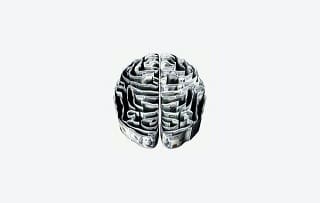CBT and Other Modalities – Similarities, Differences and Developments
The Relational Turn
In 1936, psychologist Saul Rosenzweig introduced the concept of the ‘dodo bird verdict’, referring to his claim that all modalities produce similarly effective outcomes. This led to an interest among researchers in identifying the common factors among different forms of therapy, in an attempt to explain this effect.

The first two forces to emerge in psychology – psychoanalytic and cognitive approaches respectively – did not initially place particular value on the quality of the relationship between client (or ‘analysand’/‘patient’, as they termed the person receiving therapy) and therapist.
It was only with the emergence of the third wave in psychology – the humanistic approach, led by Carl Rogers (father of the person-centred approach), who first explained his developing theory in a 1940 Minnesota lecture entitled ‘Newer concepts in psychotherapy’ – that relationship factors began to be seen as a possible explanation for the dodo bird effect.
Following his reading of the book I and Thou (published in 1937 as a translated version of the 1923 German original, Ich und Du), Rogers met its author, Austrian philosopher Martin Buber, in 1957. Buber's book focuses on the importance of human relationships in which the parties see each other as fully human and equal.
Other influential researchers around that time were Otto Rank, Jessie Taft, Frederick Allen (all colleagues of Rogers), Abraham Maslow (famous for his hierarchy of needs, described in 1943) and Rollo May (who explored being rather than doing, and non-possessive love).
Alfred Adler’s work on change was a particular inspiration for Rogers’ 1957 article, ‘The Necessary and Sufficient Conditions of Therapeutic Personality Change’, which described the conditions needed for humans to grow/thrive. In this, Rogers claimed that six conditions were not only necessary but also sufficient for therapeutic personality change to occur.
While classical person-centred therapists are the only group to believe that these conditions are sufficient, it is today widely agreed and accepted that the three relationship factors of empathy, congruence and unconditional positive regard (commonly referred to as the ‘core conditions’) are necessary in all modalities, though they are sometimes referred to using different terms (e.g. as ‘empathic attunement’ in transactional analysis).
This general realisation of the importance of relationship can be called ‘the relational turn’. Key to all modalities therefore, including CBT, are Rogers’ core conditions of empathy, congruence and unconditional positive regard (UPR).
However, in contrast with person-centred therapy, which sees these (with the addition of the remaining three conditions) as not only necessary but also sufficient, CBT stresses the importance of adding additional elements such as goal-setting, agenda-setting, homework and psycho-education.
While – in classical person-centred work – the therapist does not contribute their own ideas, instead working to remain at all times in the client’s frame of reference, both parties in CBT are seen as having valuable contributions to make to therapy, which is enhanced when each has genuine curiosity and respect for the other’s ideas.
While the therapeutic relationship is also seen as very important in the psychodynamic modality, it again has a different focus and purpose.
There, the way in which the client relates to the therapist and vice versa – through the concept of transference/countertransference – is itself used as material for the therapy (‘grist for the mill’, to use Irvin Yalom’s words, 2002: 70), allowing exploration of how the client relates to and is experienced by others.
Approach to Psychopathology
Person-centred therapists often reject the concept of psychopathology, given the modality’s critical view of diagnosis and the medical model more generally. This stance is sometimes known as critical psychology, as illustrated by ‘Drop the Disorder!’, an online group and related events run by psychotherapist Jo Watson and psychologist Lucy Johnstone.
Compared to the person-centred approach, CBT – supported by its widespread practice in the NHS and manualised nature – is more comfortable with the idea of psychopathology. Indeed, CBT manuals and research studies often focus on clients with particular diagnoses.

Directiveness and Other Differences
Other key differences in how the client and the therapist relate in CBT and in person-centred therapy are that the former:
- is directive
- involves psycho-education
- uses paperwork in sessions (and so may require a different room layout, e.g. with a shared table to work on)
- includes homework by the client and often preparation of materials by the therapist
- focuses less on emotions (though these are still seen as part of the maintenance cycle, together with thoughts, physical feelings and behaviours)
Common Criticisms of CBT
CBT has been criticised on a number of accounts, including the following:
- In some cases, the therapist may put more emphasis on the techniques as opposed to the relationship.
- CBT is usually time-limited, which may leave the client unable to grasp the taught model well enough to apply the techniques.
- As it assumes that emotional difficulties are generated by faulty thinking, CBT ignores other causes (such as genetics and biology – which may mean that medication is in fact needed).
- CBT may not be useful for clients whose childhood included abuse or neglect.
- It puts the major emphasis on here-and-now experiences and not the past.
- Therapies go in and out of fashion; CBT tends to get a bad press at certain times and this may influence the public’s opinion.
- Stoicism was founded in the experience of slaves (by Marcus Aurelius and his mother) who had little choice but to put up with their circumstances; some critics claim that this is no longer true in contemporary society.
Modern Developments: Third-Wave CBT
Over the last few years, an emerging group of approaches known as ‘third-wave CBT’ have established themselves as therapeutic meta-models, aiming to address and resolve the alleged shortcomings of CBT. These include:
- acceptance and commitment therapy (ACT)
- dialectical behavioural therapy (DBT)
- metacognitive therapy
- mindfulness-based cognitive therapy.
These incorporate concepts such as metacognition, acceptance, mindfulness, personal values and spirituality into CBT. For example, ACT is based on the idea that CBT’s challenging of negative automatic thoughts (for example, using cognitive restructuring) is unhelpful, and can even draw unnecessary attention to – and so strengthen – such thoughts.
Proponents of ACT argue instead that mindfulness techniques can enable clients to notice unhelpful thoughts but not be affected by them, instead allowing them to come and go.
Thus, the client learns not to identify with or attach undue importance to negative thoughts, which are seen in mindfulness practice as being a natural product of every human brain. Medical doctor and therapist Russ Harris has written extensively on ACT.
Free Handout Download
CBT and Other Modalities – Similarities, Differences and Developments
References
Buber M (2000) I and Thou, Simon & Schuster
Harris R (2008) The Happiness Trap: Stop Struggling, Start Living, Robinson Publishing
Maslow A (1943) ‘A Theory of Human Motivation’, Psychological Review, Vol. 50 #4, pp. 370–396): http://psychclassics.yorku.ca/Maslow/motivation.htm
Rogers C (1957) ‘The Necessary and Sufficient Conditions of Therapeutic Personality Change’, Journal of Consulting Psychology, Vol. 21, pp. 95–103: https://app.shoreline.edu/dchris/psych236/Documents/Rogers.pdf
Rosenzweig S (1936) ‘Some implicit common factors in diverse methods of psychotherapy’, American Journal of Orthopsychiatry, 6(3), 412–415: https://onlinelibrary.wiley.com/doi/abs/10.1111/j.1939-0025.1936.tb05248.x
Yalom I (2002) The Gift of Therapy, Piatkus